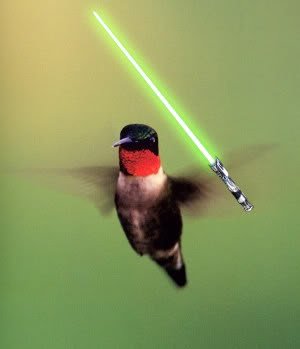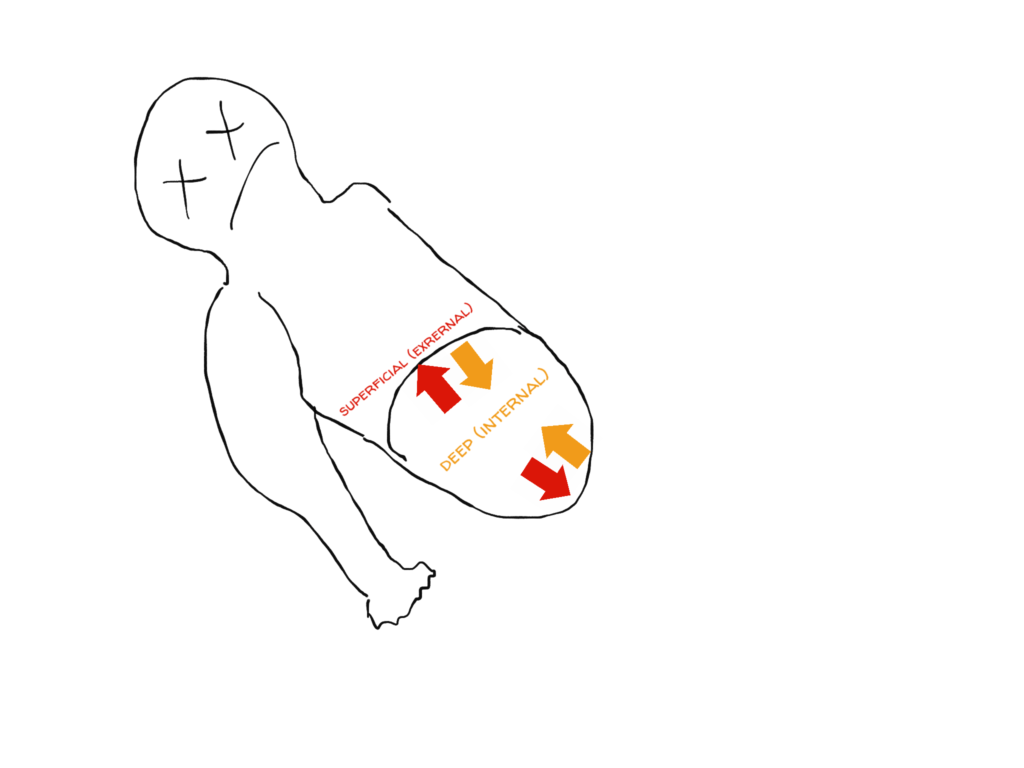Anatomical Positions
Bob Bobby (pictured to the right) is standing upright and staring at you. He is not moving or blinking, just standing and staring. While Bob Bobby may be creeping, he is in a good pose to teach anatomical positions. Physicians, nurses, paramedics, and epically awesome science teachers use anatomical positions to explain the position and location of a body part.

For example, look at Bob Bobby. Yes, he is still standing and staring. How do you explain the orientation of his hand to his arm?
Um, the hand is below the arm?
You are correct, but only in this position. Assume Bob Bobby raises his hand. Now his hand is above his arm. When using common terms (above, below), locating the hand and arm positions depends on their orientation.
Are there terms that always explain the hand’s orientation to the arm?
Yes, there is.
Awesome!!!!
Well, awesomeness has just arrived on the awesome express in Awesomeville(choo-choo). The terms are distal and proximal.
Aah. Tell me more about these terms.
I’m sure you know this, but your hands connect to your arms, and your arms connect to your shoulders. No matter how you move your shoulders, arms, and hands, they will always be in this order. The arm will always be closer in proximity(proximal) to the point of origin (shoulder joint), and the hand will always be a greater distance (distal)from the point of origin (still the shoulder joint). So, the correct way of addressing the orientation of your hand and arm are:
- The hand is distal to the arm.
- The arm is proximal to the hand.
What happens if I am a bird?
The terms still apply.
But birds don’t have arms.
True, but their wings comprise the same bones as a human arm and hand bones.
Aren’t wings and hand homologous structures?
There sure are. Great Biology throwback.
So let me get this straight. If a ninja has a sword in his hand, then the sword is distal to the arm.
Correct.
If the bird is holding a lightsaber in its wing, then the lightsaber is distal to the start of the wing?
Yes. But, I don’t think birds can wield a lightsaber with their wings.
Well, explain this picture then.

I believe this picture is Photoshopped.
No!!!! It is not!!!!! His name is Bill, and he lives in the manzanita bush outside of my window.

Oh, I’m sorry. I should probably explain that in Greek and Latin. Bill the Calypte anna lives in the Arctostaphylos glandulosa outside my fenestra.
Anyway, here are the anatomical positions that you need to learn:
Superior or cranial–Toward the head or the upper part of the body. (Ex. The head is superior to the feet.)
Inferior or caudal—Away from the head or toward the lower part of a structure. (Ex. The feet are inferior to the head.)

Anterior or ventral—Nearer to or at the front of the body. (Ex. The chest is anterior to the back)
Posterior or dorsal—Nearer to or at the back of the body. (Ex. The back is posterior to the chest.)

Medial—Nearer to the midline (median) of the body or structure. (Ex. The chest is medial to the arms.)
Lateral—Farther from the midline of the body or a structure. (Ex. The arms are lateral to the chest.)
Intermediate—Between a medial and a lateral structure. (Ex. The middle finger is intermediate between the ring finger and index finger.)

Ipsilateral—On the same side of the body’s midline or structure. (Ex. The right leg and right arm are ipsilateral.)
Contralateral—On the opposite side of the body’s midline or a structure. (Ex. The right arm and left arm are contralateral)

Proximal—Near to the point of origin. (Ex. The elbow is proximal to the wrist.)
Distal—Farther from the point of origin. (Ex. The wrist is distal to the elbow.)

Superficial or external—Towards the surface of the body or a structure. (Ex. The skin is superficial to the skeletal muscles.)
Deep or internal—Away from the body’s surface or structure. (Ex. The skeletal muscles are deep to the skin.)

Anatomical Planes
Anatomical planes separate and view the body, an organ, or tissue from different perspectives.
- Sagittal Plane – Separates a body part into left and right portions
- Coronal (Frontal) Plane – Separates a body part into anterior and posterior portions
- Transverse Plane – Separates a body part into superior and inferior portions

Body Cavities
Body cavities are not tooth decay (please continue reading when you finish laughing). Still laughing? I’ll wait. Body cavities are open spaces within the body that surround and protect vital organs.
- Dorsal cavity—This cavity houses your brain and spinal cord. This cavity has two cavities within it. Yes, these are cavities in cavities.
- Cranial cavity—The space within your skull that houses the brain
- Vertebral cavity—Your vertebrae (backbones) have a hole in them, and when linked, they form the vertebral cavity. The vertebral cavity has the spinal cord.
- Ventral cavity—Largest cavity that comprises six different cavities (seven total).
- Thoracic cavity–The space within your chest contains the lungs, heart, thymus, and a large part of the esophagus; it comprises four cavities.
- Pleural cavity– The right lung is in the right pleura, and the left lung is in the left pleura; they surround and protect the lungs.
- Mediastinum–The mediastinum sits between the pleura; contains the esophagus, thymus, and heart.
- Pericardial cavity – Houses the heart.
- Diaphragm—The diaphragm is a thin muscle that separates the thoracic cavity from the abdominal cavity; it plays a major role in respiration; it is NOT a cavity.
- Abdominal cavity– The largest ventral cavity, found inferior to the thoracic cavity, contains most digestive organs, the kidneys, spleen, and adrenal glands.
- Pelvic cavity—Found inferior to the abdominal cavity and contains the urinary bladder and reproductive organs.
- Thoracic cavity–The space within your chest contains the lungs, heart, thymus, and a large part of the esophagus; it comprises four cavities.
